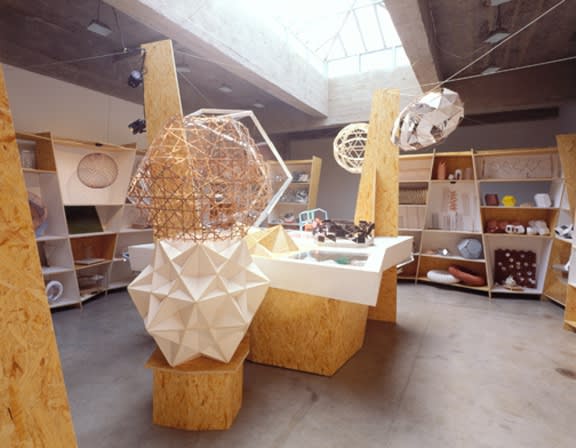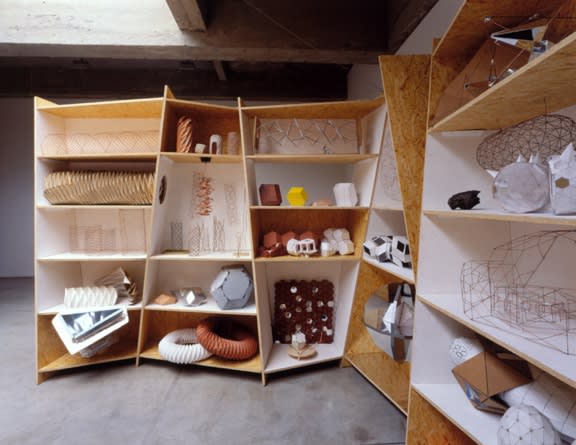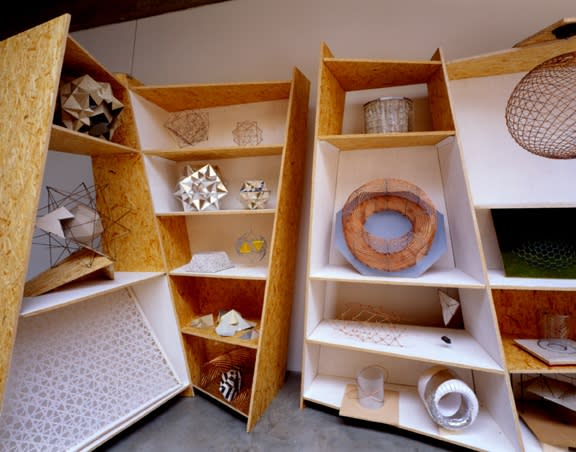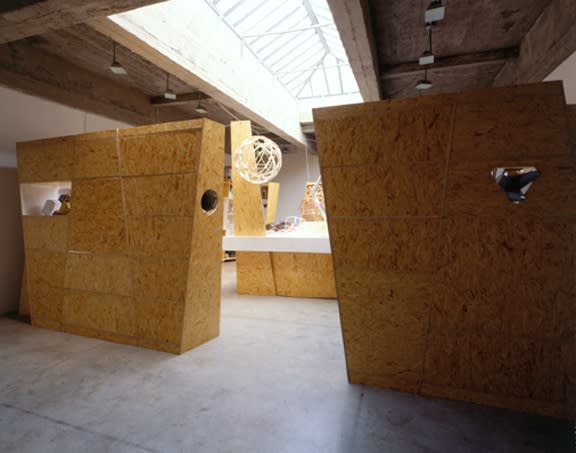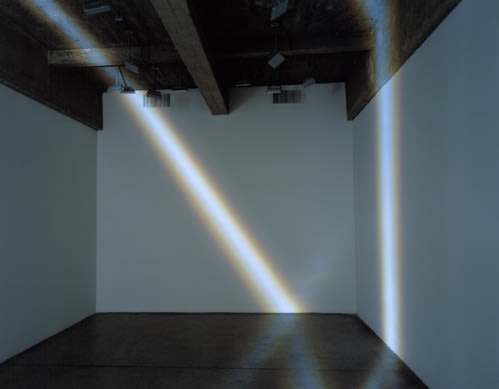Olafur Eliasson: Tanya Bonakdar Gallery, New York
Tanya Bonakdar Gallery is pleased to present Olafur Eliasson's fourth solo exhibition in New York. For the main installation, the artist has converted the gallery into a cabinet of his studies and models. This ‘modelroom’ exists both as a spatial structure and a viewing platform for dozens of intricately constructed models of various scales and simple material. Interconnected customized shelving units present the visitor with a lollapalooza of artifacts from the artist’s investigation of grids and symmetries, as well as his research into spatial structures and experience.
Over the past several years, Olafur Eliasson has often worked closely with Einar Thorstein, a philospher, scientist, engineer and friend of the late Buckmeinster Fuller. The extent of Einar’s contribution to Olafur’s work is well documented in the recent publication, 'to the habitants of space in general and the spatial inhabitants in particular.' As discussed therein, geodesic domes, fivefold symmetries, spiral spheres, towers and pavillions, endless doughnuts, the golden ratio, kaleidoscopes, tensile structures, and more, form a kind of vocabulary for the artist to explore the understanding of structures and space. The objects in the ‘modelroom’ ostensibly serve as research maquettes for various aspects of Eliasson's projects. Some realized, some pending, some mere experiments, they altogether combine to promote a greater understanding of spatial forms and their construction. Eliasson is particularly interested in illustrating the cultural influence over how we understand, see and experience space. As in much of Olafur’s work, simplicity and transparency are exploited in order to suggest a singular experience, laid plainly before the spectator. In this work, simple two-‐dimensional forms repeat, overlap and intersect, in order to generate numerous spatial structures, sometimes utopian and sometimes profane.
The aim of this project is not to create a new value system for ‘better’ spatial structures than the Cartesian culture in which we live. Eliasson has merely found great inspiration in the use of different spatial ideas to expose the constructed nature of our environment. As such these questions allow us to reflect upon our surroundings as they already exist.
In previous exhibitions, Olafur Eliasson has isolated frequencies of light and then introduced white light to make the visitor conscious of the impact of color on our perception. He has created an imaginary sequence of infinite spaces using mirrors and an open skylight, questioning our ability to orient ourselves. These works and others (kaleidoscopes, light projections, vegetable growth), exist as experiences more than material objects. Presented via transparent means of constructions, these experiences illustrate the nature of perception-‐based stimulation, and show its ripe potential for manipulation. Eliasson makes the spectator aware of the conditions of experience, and through this, allows for the evaluation of the construction of the spectator’s own subjectivity.
